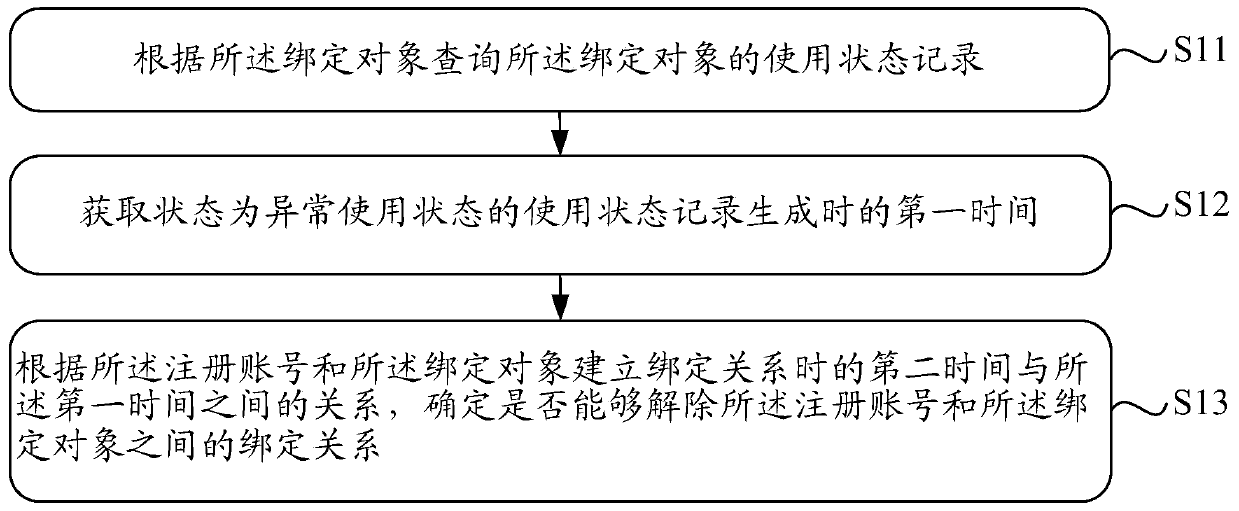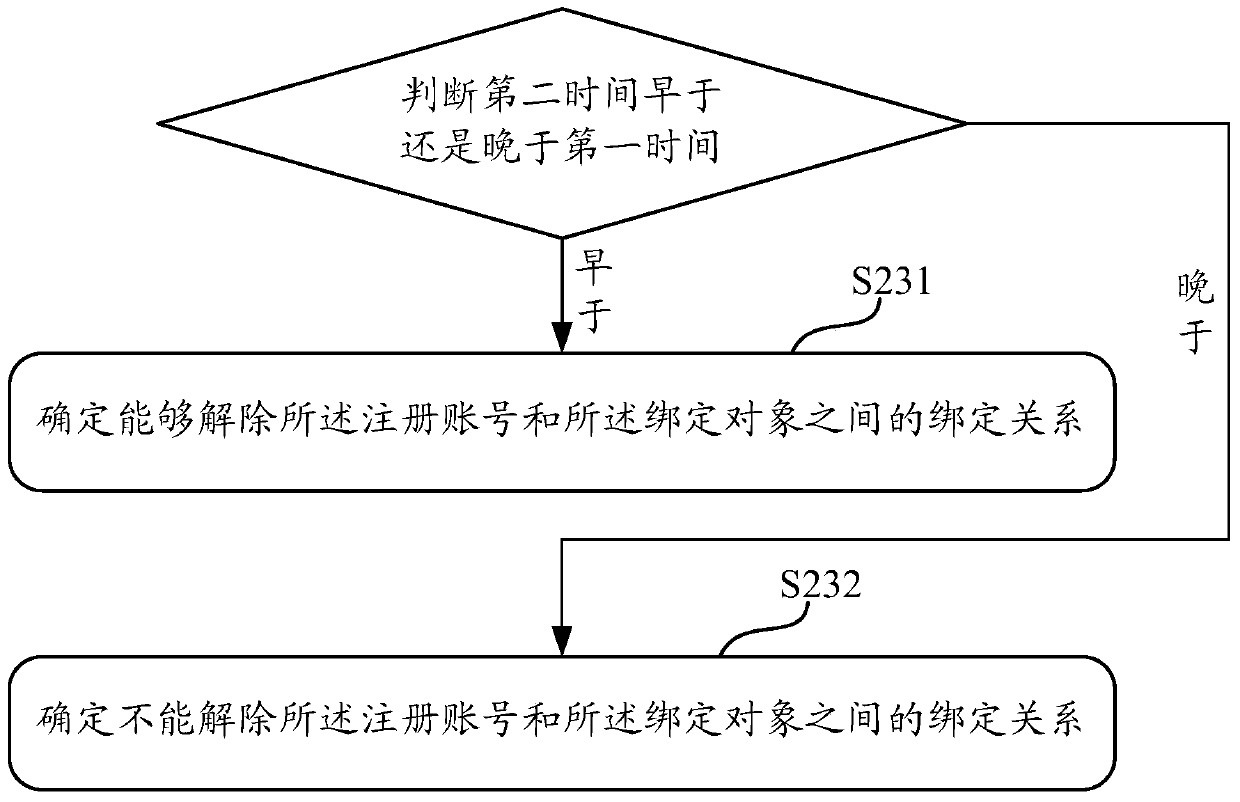A method and device for unbinding and binding
A binding and unbinding technology, applied in the computer field, can solve problems such as registration behavior obstruction, inability to determine the binding object, and inability to determine the unbinding of the binding object, so as to achieve the effect of improving user experience and resource utilization
- Summary
- Abstract
- Description
- Claims
- Application Information
AI Technical Summary
Problems solved by technology
Method used
Image
Examples
Embodiment 1
[0034] As mentioned above, users will be assigned to registered accounts after successful registration on the website. These registered accounts are usually bound to binding objects, but once the binding objects are not used by the current user, they may be owned by the binding objects. The server system recycles and distributes it to other users. For websites, it is often impossible to determine whether the binding object is currently used by the current user or has been used by other users. Therefore, it is impossible to determine the binding object and the current user's registered account on the website. Whether it is possible to unbind between. In order to solve the above technical problems, the present embodiment 1 provides a method for unbinding, which is used to determine whether the binding relationship between the registered account and the binding object can be released. The specific flowchart of the method is as follows: figure 1 shown, including the following step...
Embodiment 2
[0063] In step S13 of Embodiment 1, it is mentioned that according to the relationship between the second time and the first time when the registered account and the binding object establish a binding relationship, it is determined whether the registered account and the binding object can be released. The binding relationship between the binding objects. During specific operations, there may be the following situations: the first time is later than or earlier than the second time, thereby forming another embodiment of the present invention, such as figure 2 As shown, the difference between this embodiment 2 and embodiment 1 is: step S13 of embodiment 1 is changed in this embodiment 2 to: judge whether the second time is earlier or later than the first time, if the second time is earlier than the first time If the second time is later than the first time, then step S231 is performed; if the second time is later than the first time, step S232 is performed. The two steps are de...
Embodiment 3
[0073] In order to describe the unbinding method of Embodiment 2 more thoroughly, a specific example is used for description below. The binding object is mobile phone number B, correspondingly, the server to which the binding object belongs is the telecom operator server corresponding to the number segment of the mobile phone number B, and the registered account is the one assigned by the website to the user when the user registers on the e-commerce website. account C.
[0074] Before this example 3, the mobile phone number B and the account C have established a binding relationship, and the user can receive the promotion information related to the website, the logistics information of the user's shopping, etc. through the mobile phone number B, that is, the mobile phone number B is bound to the account C. After the e-commerce website is determined, the above-mentioned e-commerce website will send information to users regularly (such as every day or every week, etc.), or send ...
PUM
 Login to View More
Login to View More Abstract
Description
Claims
Application Information
 Login to View More
Login to View More - Generate Ideas
- Intellectual Property
- Life Sciences
- Materials
- Tech Scout
- Unparalleled Data Quality
- Higher Quality Content
- 60% Fewer Hallucinations
Browse by: Latest US Patents, China's latest patents, Technical Efficacy Thesaurus, Application Domain, Technology Topic, Popular Technical Reports.
© 2025 PatSnap. All rights reserved.Legal|Privacy policy|Modern Slavery Act Transparency Statement|Sitemap|About US| Contact US: help@patsnap.com



